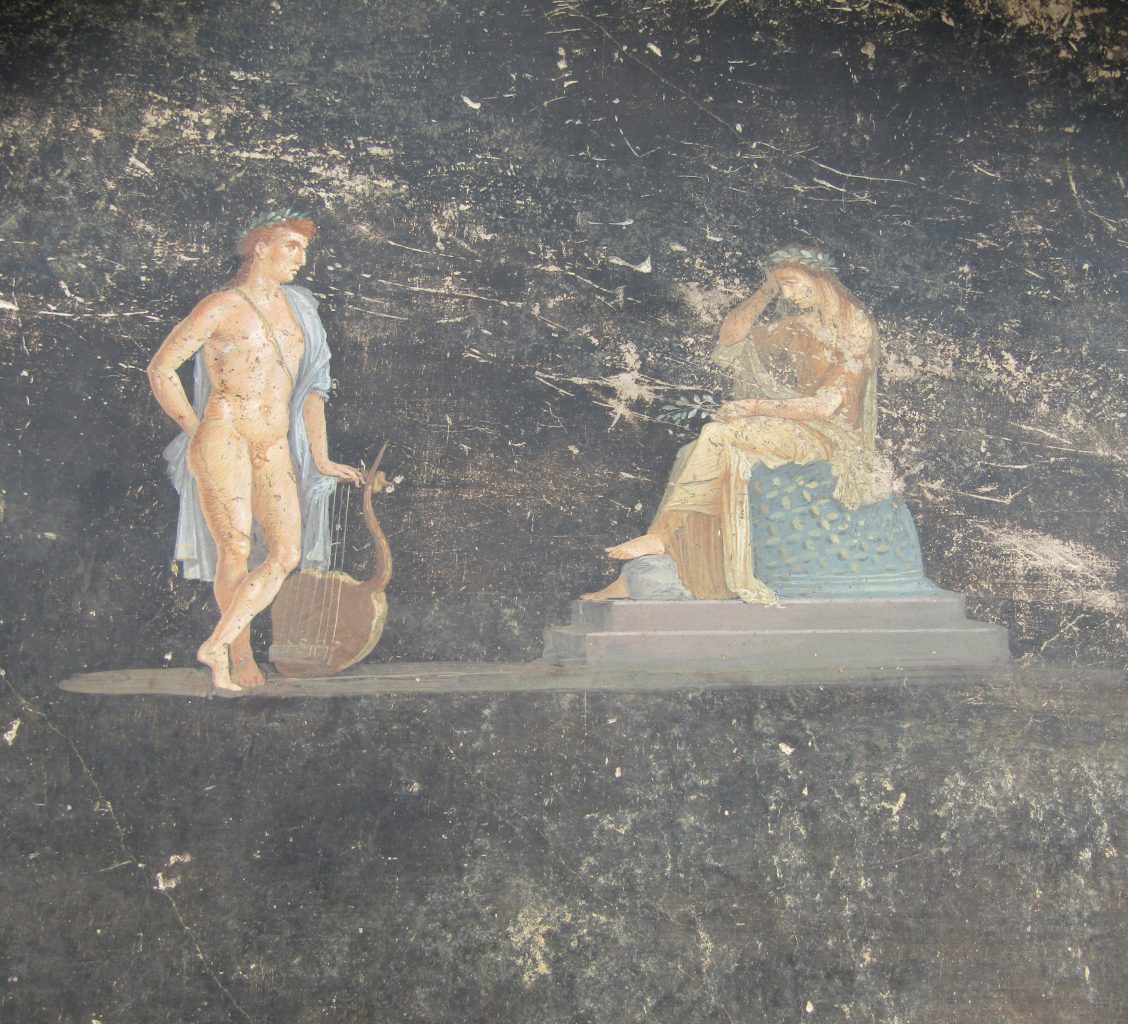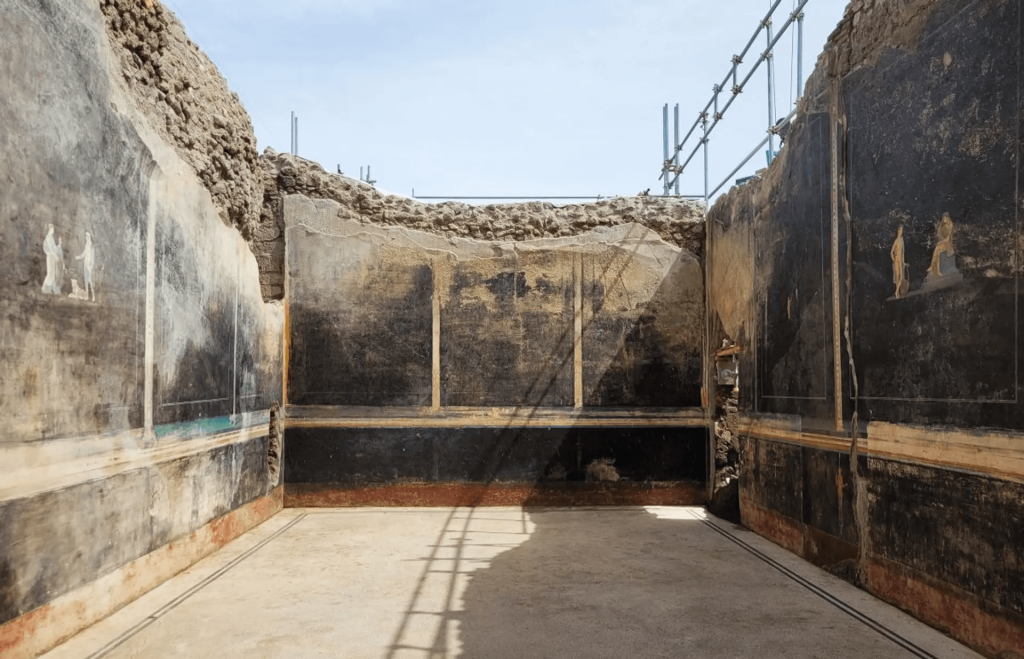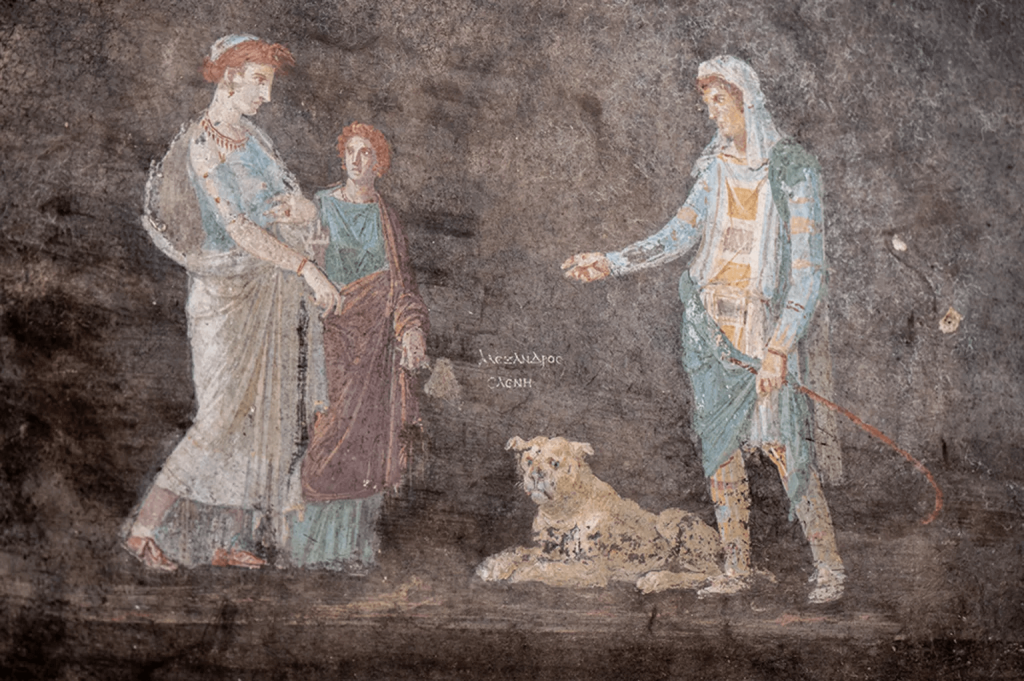
A striking fresco depicting Helen of Troy found during excavations in the lava-floored city of Pompeii
Archaeologists have uncovered remarkably preserved ‘fresco’ paintings on a wall in the banquet hall of a large house on Via di Nola, one of the longest streets in Pompeii, which was buried under the lava of Mount Vesuvius.
In a recently excavated area of the ancient Roman city of Pompeii, archaeologists have discovered exquisitely preserved frescoes in the banquet hall known as the “Black Room”.
It is called the black room because it was painted black, presumably to mask the soot from the oil lamps that were about to burn. In contrast, the room’s mosaic floor is made up of more than a million small and intricately arranged white tiles.

It is the latest astonishing discovery in Pompeii, almost completely preserved under the ash and pumice left behind by the eruption of Mount Vesuvius in 79 AD.
Two frescoes painted on the walls of the hall show scenes from Greek mythology and literature. One of the striking works of art depicts Helen of Troy, a beautiful woman in Greek mythology, meeting the Trojan prince Paris for the first time. According to legend, the resulting elopement between the two sparked the Trojan War.
The second fresco depicts the Trojan priestess Cassandra seated while the god Apollo, one arm resting on a lyre, tries to seduce her. When she refuses the god, he condemns her to proclaim prophecies that will never be believed.

The “Black Room” is just one part of a larger house that archaeologists have been excavating for a year. It was discovered in a residential and trading area known as the Ninth District. The house had a garden and reception room; next door was a bakery where skeletons and a mausoleum were discovered; next to the bakery was a laundry.
Archaeologists suspect that these three sites (the house, the bakery and the laundry) belonged to the same person. They also found the initials “ARV” on the walls and millstones.
“We know who ARV is: he is Aulus Rustius Verus,” Sophie Hay, archaeologist at Pompeii archaeological park, told the BBC. “We know him from other political propaganda in Pompeii. He is a politician. He is super rich. We think he might be the owner of the luxury house behind the bakery and the laundry.”
Pompeii Archaeological Park
Cover Photo: Archaeological Park of Pompeii
You may also like
- A 1700-year-old statue of Pan unearthed during the excavations at Polyeuktos in İstanbul
- The granary was found in the ancient city of Sebaste, founded by the first Roman emperor Augustus
- Donalar Kale Kapı Rock Tomb or Donalar Rock Tomb
- Theater emerges as works continue in ancient city of Perinthos
- Urartian King Argishti’s bronze shield revealed the name of an unknown country
- The religious center of Lycia, the ancient city of Letoon
- Who were the Luwians?
- A new study brings a fresh perspective on the Anatolian origin of the Indo-European languages
- Perhaps the oldest thermal treatment center in the world, which has been in continuous use for 2000 years -Basilica Therma Roman Bath or King’s Daughter-
- The largest synagogue of the ancient world, located in the ancient city of Sardis, is being restored











Leave a Reply